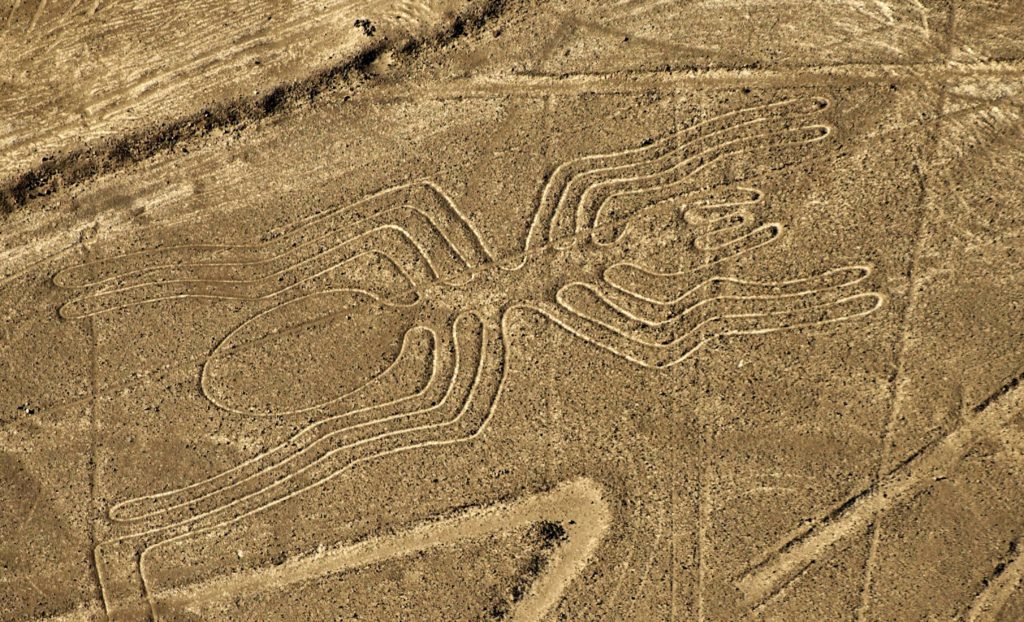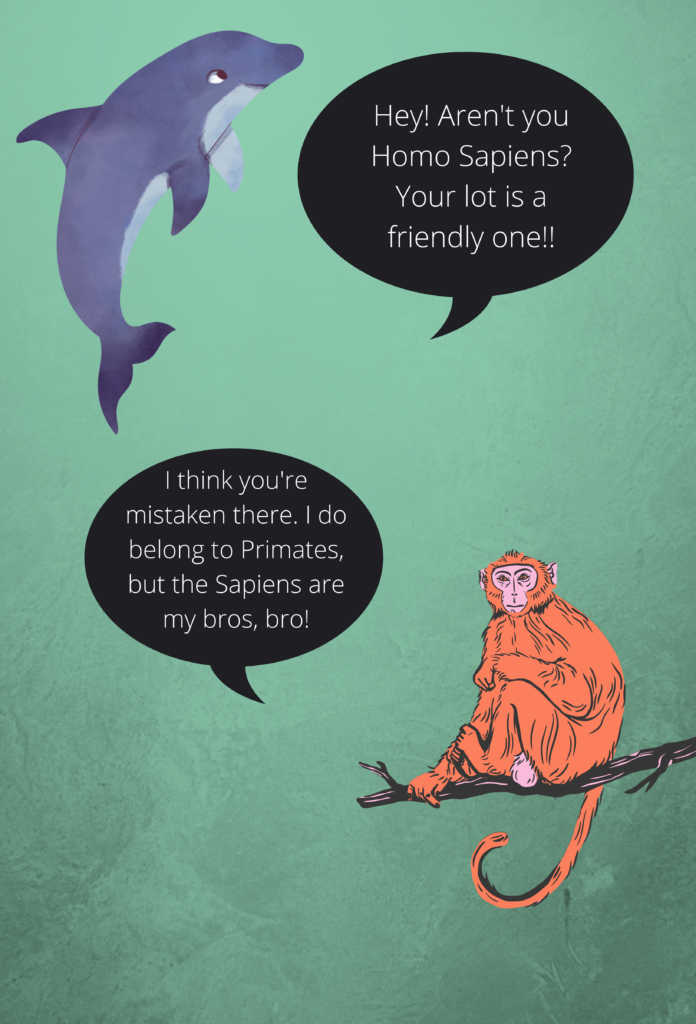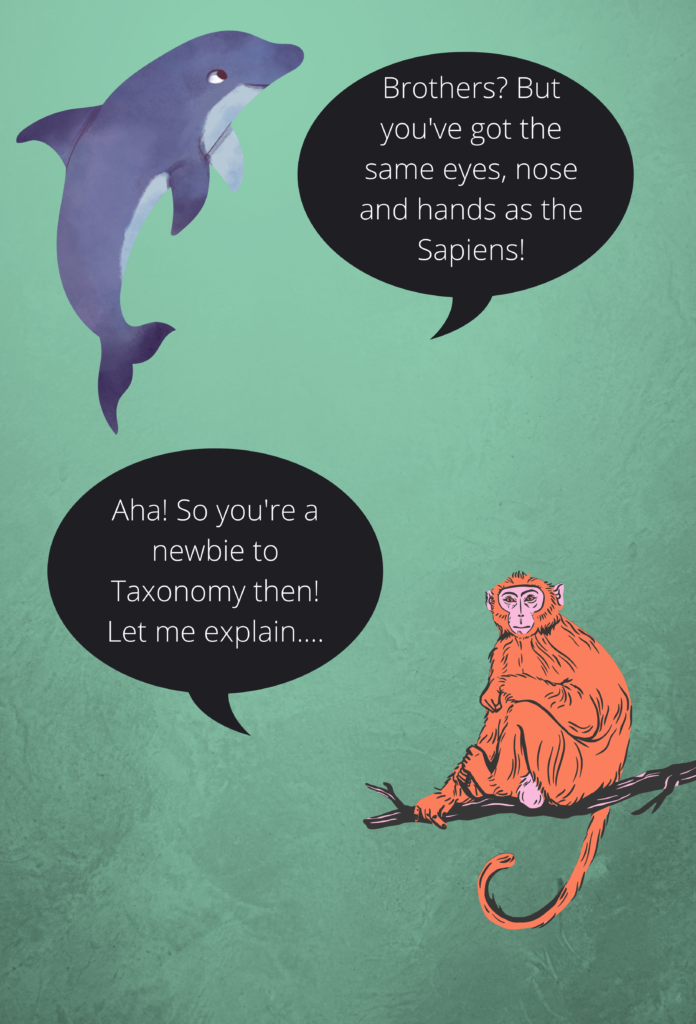To all the concepts I’ve disliked in Biology, this one tops them all!
There exists a singular subject that has garnered the maximum amount of hate from a poor 15-year-old trying hard to wrack her brains and understand it: Taxonomy. In the universe of Science, the devil doesn’t wear Prada, it wears two costumes, one of which, is Taxonomy (the other, undoubtedly, is organic chemistry). It is everyone’s nightmare. You could put a child to sleep, threatening dire consequences of the recital from a taxonomy handbook if she doesn’t oblige! Studying this messy subject physically feels like stepping into a muddy puddle, or worse, having muddy water sprayed all over you. If that wasn’t enough, you’re even expected to draw the bloody organisms in your exams! What?! We hate this subject with passion. So much so…that we decided to write a full-fledged article on it. Science Sans Barriers, remember?
Taxonomy has all the attributes of being disliked. It is dry, messy and depends a lot on rote remembrance to be understood. At the end of it, it feels like an absolutely redundant subject, for who cares what the scales of the lizard look like if we can look inside its cells to find the answers to all our questions? The root dislike for this subject lies in the fact that there seems to be no pattern, no logic behind all the “terminological assault”! But does the fault truly lie with the subject? Let’s explore “subjectively”!

Fault lines: The truth half hidden
It is definitely true that at its core, taxonomy holds little scope for innovation. The rules laid down need to be followed, and the accepted system must be adhered to. But the truth is, all of biology, and much of modern medicine owes itself to taxonomy. We also know that we’ve heard the aforementioned line a zillion times, and yet taxonomy still holds its own when it comes to traumatizing us! However, we need to let go of some of that baggage and look at the field from a new perspective. So, other than its assorted applications in various interdisciplinary fields, what is it about taxonomy that we need to learn and understand?
Taxonomy does more than just assigning names to organisms. It helps us create an inventory of sorts, where we are able to pick and choose any organism and study it, given that we know where it is classified under. However, that doesn’t mean taxonomy simply exists for bookkeeping purposes. According to Quentin Wheeler, a taxonomist at SUNY’s College of Environmental Science and Forestry, taxonomy is the only science capable of creating a living inventory of all the varied creatures present on our planet, along with recreating the history of life and solving puzzles of our existence and our future ahead as a collective ecology. It is the perfect magnifying lens to study biodiversity!
ET: Explaining Taxonomy

Source – https://www.history.com/topics/south-america/nazca-lines
The year is 500 BCE. The Nazca lines have just been etched out, after the aliens who taught the Nazca people agriculture have left. These lines form various shapes, such as that of a hummingbird, heron, monkey and lizard.
Now, whether you believe in the theory of aliens or not, is it not intriguing that such shapes and lines were etched out in the deserts of Peru almost – centuries back? Why were these lines drawn so? Some speculate that the Nazca people drew these shapes in order to please their deities. Others just go with the alien theory, stating that aliens did actually teach the Nazcans agriculture, and so the glyphs were etched in their honour, and also to act as identifiers in case the aliens decided to drop-by sometime. What’s interesting is that a majority of these shapes actually portray biodiversity! Now, why would that be? Were these glyphs an indicator of the biodiversity richness of Peru in 500 BCE? We could speculate the whole day, but let’s not digress.
Going along these lines, let’s think of a hypothetical situation. Assuming that aliens visit our humble abode and are astounded by the biodiversity around them. The first step they would take towards identifying their environment would be to attribute shapes, sizes and colours to everything. In their language, green could be spelt “gehuna”. Then so be it! They would label all trees as “gehuna” in colour. That is precisely what taxonomy does, at the most basic level. It considers, first and foremost, the morphological similarities of all organisms. It’s probably not as simple as segregating cats from dogs, but that’s a general idea! The fact that we know a cat is in fact not a dog, is thanks to taxonomy. If that seems pretty straightforward, think again. We take the biodiversity around us for granted, but the aliens are seeing trees and moss for the first time. In fact, how do human babies perceive and classify the biodiversity around them? Is it not passed-on knowledge that cats are in fact called cats? This is how basic taxonomy is to us.
Quentin Wheeler, back in 2005, understood this and went on to name three new beetle species after George W. Bush, Donald Rumsfeld, and Dick Cheney, who are famous American politicians. He continued this practice of erratic nomenclature and named several other organisms as Darth Vader, Stephen Colbert and even Pocahontas! He did this in a bid to attract public attention towards taxonomy and its importance in our day-to-day lives. We view taxonomy, and more specifically nomenclature, as something so esoteric, only because of its language, which is Latin. It isn’t really taxonomy’s fault that Latin is now Dead Man’s language, is it?
The next thing the aliens would do is to look out for patterns (although that is something humans claim dominance over-either ways, we’d still have assumed the aliens to be humanoid, wouldn’t we?). Patterns of life, patterns of death and patterns of everything in-between, would duly be noted. And then would emerge the herculean task of classifying and sorting and dividing and subdividing the biodiversity. We’ll be covering how these patterns are identified and the classification is done, in the next issue. For now, we can focus a little on The Ultimate Question, the answer to which is 42 (if you’re backtracking and trying to think of everything you did wrong in the past hour to be reading this article now that isn’t making sense, hold on. If you got the reference, congratulations! you’re clearly NOT a Vogon.) In The Hitchhiker’s Guide to The Galaxy series written by Adam Douglas, a supercomputer called Deep Thought is invented in the future in order to figure out the Ultimate Answer to Life, the Universe and Everything. The answer (you guessed it right) is computed as 42, after 7.5 million years of computing. Sadly enough, the folks alive don’t know what the question is, and so another supercomputer is built, the size of a planet, and dubbed as “Earth”, in order to figure out the Ultimate Question now.
We’ll go out on a limb here, and assume they’re talking about the real planet Earth. Then, can we not call taxonomy as the Ultimate Means of Comprehending The Ultimate Answer? How would we perceive and comprehend the ‘life’ around us, if we did not have taxonomy coming to our aid? Food for thought for when you’ve untangled yourself!
Dying Science or Science dying?


Taxonomy is now frequently dubbed as a “dying science”. Young students of biology are often attracted towards the more fanciful field of biotechnology and all its other sub-branches. But through the Coronavirus pandemic, it is probably very clear why taxonomy is here to stay. How else are we going to identify other such viruses and pathogen? More importantly, taxonomy is the need of the hour when it comes to conservation. Species are going extinct three times faster than we can identify and name them. Taxonomy, which is based on a rigorous practice of all-or-none in terms of classification, has been unable to catch up with the rapid extinctions, due to neglect by academicians all over the world. Now, it is imperative that we classify the organisms, for if they go extinct without even leaving any fossils, we will never be able to learn of their existence.
There is a growing concern with regards to the growth of the field as well. In the absence of innovative ways of reviving the art of taxonomy, the development of newer areas of research is languishing. As stated before, nomenclature, which can be called the key to taxonomy, is still operated in Latin. There is a valid reason for that; however, as the public no longer speaks this language, it has been side-swept as something unnecessary. The pros and cons of using Latin can be debated forever, but the fact remains that taxonomy is in dire need of rescue. There are some cases of unethical and non-scientific naming of organisms that have come to the fore recently that have their own implications in the long-term research of evolution, that would definitely be hampered by such fraudulent methods.

All in all, we’d like to conclude by saying that we aren’t great fans of taxonomy either. That is saying something, given that we’ve studied 5 courses of Life and Diversity in our under graduation. It is sad that we’ve had to resort to rote mugging-up, instead of being able to truly understand the subject. Hence, we found it fit to examine taxonomy through a different lens and see if we could make things better.
Author:

Luminaa Anandh
Co-Founder at The Science Paradox

Damn! The very first paragraph legit described our thoughts on taxonomy! Well, for the first time ever, I enjoyed reading something related to taxonomy, thanks to you, Luminaa. Good job!
If you take reference from Indian Vedas and Puranas ,India was a much civilised ,scietifically developed and rich country even before a few thousand years before B C. History needs to be rewritten. Just go and see some temples built in south India. The kind of technical knowledge required to design and build these mega structures is mind boggling. And these were built before Newton discovered gravity, and Galilio found that earth is round.
Good one!